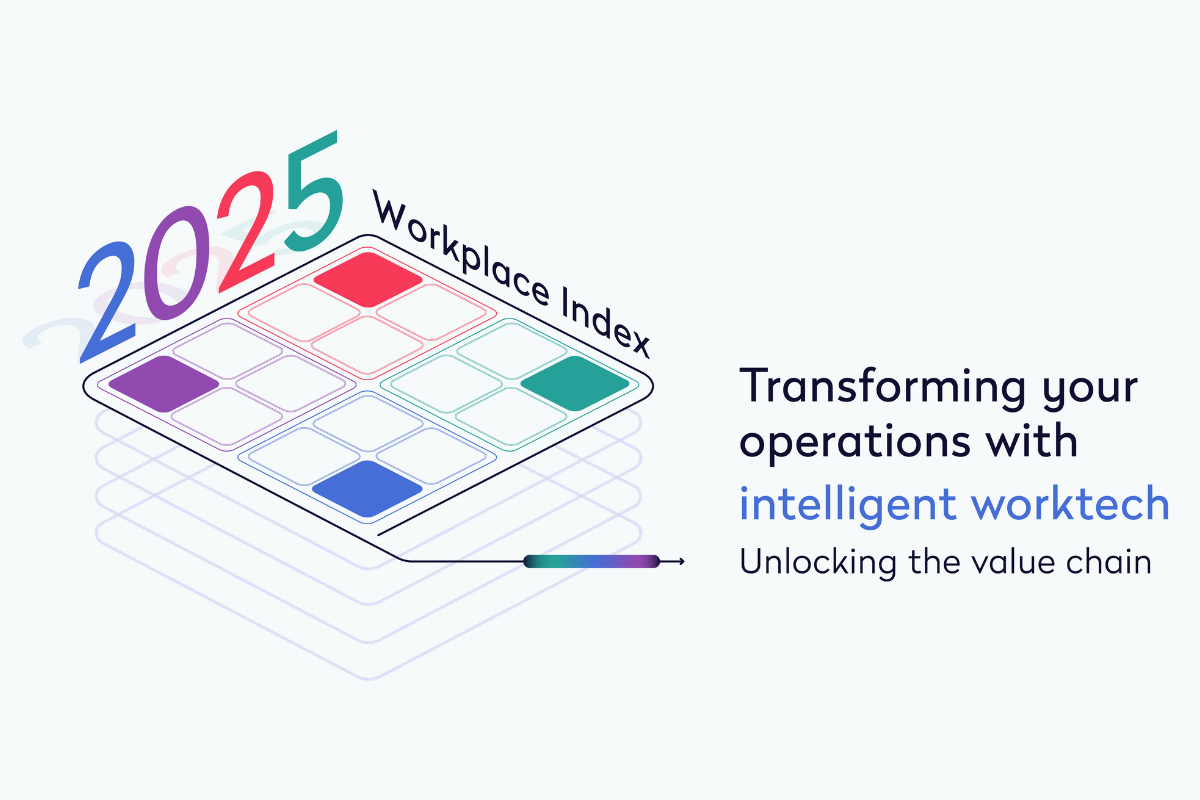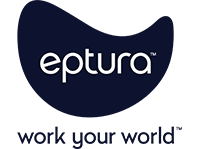
As hybrid work continues to evolve, workplace and facility leaders are facing new pressures. Employees are returning to the office more frequently, expectations for experience are rising, and operational complexity is growing, according to Eptura’s 2025 Workplace Index. In fact, the report reveals desk bookings of more than three days per week are rising, while 34% of businesses plan to increase in-office days in 2025.
The solution isn’t more technology, however. It’s better integration.
Key takeaways
- The 2025 Workplace Index highlights a trend of increasing desk bookings and more frequent in-office days, reflecting a renewed focus on connection, culture, and collaboration as companies bring employees back to the office
- Better integration of workplace systems is essential for managing the growing operational complexity and increasing expectations for the employee experience. Many businesses still rely on multiple standalone solutions, leading to inefficiencies and data silos
- Integration of workplace, facility, and asset management systems creates a value chain that improves productivity, reduces costs, and enables smarter decision-making
When systems work together, organizations unlock a chain of value that improves productivity, reduces costs, and enables smarter decision-making.
The new pressures: More people, more complexity
The Workplace Index highlights how shifting hybrid work trends are putting new pressure on facility and workplace leaders to deliver better space usage, resource planning, and the overall employee experience.
These insights echo across industry research. According to CBRE’s 2025 Global Workplace & Occupancy Insights, organizations are now viewing the workplace as a strategic asset, not just a cost center, and the focus is shifting from efficiency to effectiveness, with occupancy strategies designed to support productivity, collaboration, and employee well-being.
Forbes also reports a growing number of companies are bringing employees back to the office, driven by a renewed emphasis on connection, culture, and collaboration. The move is happening alongside a broader workplace transformation, where expectations around flexibility and purpose are reshaping how organizations operate.
Building occupancy data highlights the complexity of the change. Office attendance has stabilized at around 50% of pre-pandemic norms, according to MIT Sloan Management Review, but the way people use space has changed. Peak occupancy now tends to cluster mid-week, creating uneven demand across facilities and increasing the need for dynamic space planning.
For facility and workplace leaders, the trends mean managing environments that are no longer predictable. They must now balance fluctuating occupancy with the need to optimize space, support employee experience, and maintain operational efficiency.
Solution fragmentation is holding many back
Despite the growing demand for smarter workplaces, most organizations are still stuck operating from within silos. Half of businesses use an average of 17 standalone worktech solutions, and only 4% have a fully integrated platform, according to the Workplace Index.
Data is scattered, reporting is manual, and teams spend excessive time reconciling systems.
When systems don’t talk to each other, it’s harder for teams to track occupancy, manage assets, or respond to maintenance issues. Leaders lack visibility into how their spaces are being used, and employees face friction when trying to navigate the workplace.
Budget constraints are often a major barrier to integration. According to the report, 67% of organizations cite budgetary constraints as the top obstacle to integrating workplace solutions. Other significant barriers include contractual commitments to legacy software (19%), and a lack of perceived value in integrated solutions (23%), which makes it harder for teams to secure funding.
Integration unlocks the value chain
Integration is about connecting systems to unlock a value chain that transforms how organizations operate.
When organizations consolidate workplace, facility, and asset management into a single system, they eliminate silos and enable data to flow freely across departments. Connectivity allows for integrated use cases, such as raising asset work orders directly through employee experience apps or linking occupancy data with cleaning schedules and energy usage.
From there, the next link in the chain is cross-platform data analytics. With centralized data, businesses can analyze trends across space utilization, asset performance, and employee behavior. Greater visibility helps leaders make informed decisions about everything from real estate strategy to maintenance planning.
The report notes that 37% of organizations currently rely on 11 or more full-time employees just to collate and analyze operational data. It’s an inefficiency that integration helps an organization address directly.
The last link in the chain is embedded AI, which becomes truly powerful when fed by clean, connected data. AI can help organizations automate routine tasks, predict maintenance needs, optimize space allocation, and even support emergency response.
It’s a kind of intelligence that’s only possible when systems are integrated, and data is unified.
What a modern integrated workplace office looks like in practice
When your organization connects workplace systems through a unified platform, you gain more than convenience. You gain visibility, control, and the ability to act with precision, proactively managing space, resources, and change across your entire portfolio.
Real estate planning: Make smarter portfolio decisions
Managing a complex real estate portfolio involves constantly balancing cost, occupancy, and long-term strategy. A unified platform gives you an accurate, centralized view of your entire footprint, allowing you to simulate future scenarios before committing to major decisions.
For example, when evaluating whether to renew a lease or consolidate locations, you can model the operational and financial impact of each option. These forecasts draw from headcount projections, space utilization data, and cost variables, so your planning is grounded in real-world conditions, not assumptions.

Integrated lease administration tools also help you stay compliant by tracking critical dates and obligations across properties. With real-time occupancy data layered in, you can identify underused or overbooked spaces, monitor usage trends, and understand how employee behavior is shifting.
Your decisions are not only financially sound but operationally effective, without the need to reconcile data across disconnected systems.
Space planning: Design environments that work
Once you’ve made strategic real estate decisions, the next step is optimizing the space you have. A unified platform gives you the flexibility and insights you need to adapt environments to needs.
During a departmental reorganization, for example, you can use interactive floor plan tools to test layouts, visualize team proximity, and plan for collaboration zones, all before making any physical changes.
Occupancy sensors and booking data provide a clear picture of how employees and visitors use spaces. A meeting room that’s frequently booked but rarely occupied, or a quiet zone that’s consistently overcrowded, are signs it’s time to make changes.
Move management: Make changes confidently
Operational change is inevitable, but it doesn’t have to be disruptive. Whether you’re relocating a single team or reconfiguring an entire floor, a unified platform helps you coordinate transitions with efficiency and clarity.
In a multi-phase move involving several departments, bulk move planning allows you to group requests, assign tasks, and visualize the entire process through a shared calendar. This eliminates reliance on spreadsheets and reduces the risk of missed steps.

As move requests come in, automated workflows help you handle logistics. You can notify stakeholders, trigger work orders, and track progress, all within a centralized system. Because move data is integrated with space planning, floor plans update in real time, so everyone is aligned, reducing the risk of errors.
The result is a smoother transition for employees, greater operational control for facility teams, and a more agile workplace overall.
A brighter future is more intelligent
Integration isn’t just about connecting systems. It’s about transforming how your organization operates. By becoming more connected, more informed, and more intelligent, you can make smarter decisions, deliver better experiences, and unlock the full potential of modern worktech.
As the demands on space, people, and assets continue to grow, organizations need platforms that bring everything together. Eptura’s Workplace Index makes a clear case that integration is the key to unlocking value, improving productivity, and building a workplace that works.
Read the full report.









